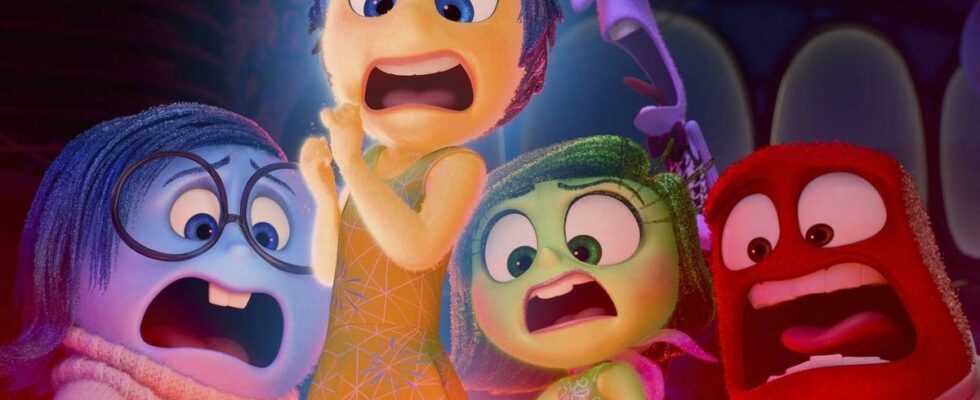Published on
Updated
Reading 2 min.
in collaboration with
Amélie Boukhobza (Clinical psychologist)
Nine years after the release of the first opus, Vice-Versa 2 returns to our screens today. And features new emotions personified in the brain of Riley who has become a teenager. Beyond entertainment, what is the interest for young spectators?
Attention fans of Pixar films! This June 19 hits our screens Vice-Versa 2, the continuation of Riley’s adventures, which moved many families in 2015. The idea is indeed original: the animation zooms not on the little girl, but on the emotions (Joy, Sadness, Anger, Fear and Disgust , personified by exuberant characters) who take control of his brain and constantly oppose each other. The opportunity to address the child’s emotions and feelings.
In adolescence, new emotions take control
A few years later, this new opus takes place when Riley is a teenager. And obviously, this stage brings in new emotions for the young girl. Embarrassment, Anxiety, Envy and Boredom therefore take on importance.
That’s not all, this new film also develops a sense of self, and addresses new ideas linked to adolescence such as personal ambition, dreams to be fulfilled, friendship that evolves or even selfishness. Suffice to say that many children and adolescents (and former children!) should recognize themselves in it.
This film allows children to express their emotions
But can the staging of emotions have an impact on young spectators? We asked our psychologist Amélie Boukhobza the question. According to her, the film has several positive effects. Starting with “recognizing” your emotions.
“I always find it interesting for children to materialize the main emotions into distinct characters. This is not only an opportunity for them to better understand and identify their own feelings, but also to help them to externalize emotions, making their recognition and management easier. Children can see their emotions as entities that they can interact with, which is a powerful tool.”
Throughout the story, the child also understands that each emotion has its place and its usefulness., including those that are often perceived as negative, such as sadness or anger. “In today’s society where everything tends to silence these emotions, I always find it meaningful to remember that each one is an indicator of something in us…”.
Good in his body, good in his head!
A tool to develop emotional intelligence
In a fun form, Vice-Versa 2 therefore promises to be an excellent educational tool for developing emotional intelligence in children.
“It is also an opportunity to learn strategies for managing one’s own emotions and those of others, both for children and adults, especially their parents. Because by providing a clear visual representation of their children’s emotions, parents can use the characters and situations in the film as points of reference.”
To not only understand what is happening in their children, but also to help them express what they feel. In short, a valuable tool for navigating the complex world of emotions with better understanding and more empathy.

